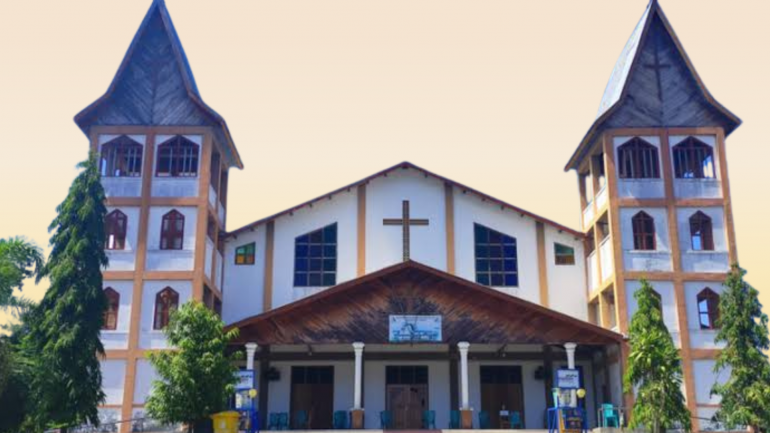Flores Island: An emerging hub of Ecotourism and Catholic Pilgrimage in Indonesia

Flores has over 2,700 Catholic churches, which are anticipated to become pilgrimage routes, further boosting religious and cultural tourism.
Flores Island is renowned for its striking natural attractions, including Kelimutu, a volcano famed for its three crater lakes that change colors.
At times, the lakes are blue, green, and black; other times, they turn white, red, and blue.
The island attracts tourists with its diving and kayaking sites, lakes, waterfalls, caves, and stunning landscapes.
Flores' westernmost tip, Labuan Bajo, is home to Komodo dragons and diverse wildlife.
Beyond its rich ecotourism legacy, Flores is poised to become an international pilgrimage and cultural destination.
Unique in Indonesia, the world's largest Muslim-majority country, Flores has a predominantly Catholic population.
Located in the Lesser Sunda Islands in southeastern Indonesia, Flores is also known as Missionary Island due to its Catholic history and heritage.
Minister Sandiaga Uno emphasized the island's potential for religious tourism, especially through the integration of Catholic Church traditions with local culture.
In a webinar themed 'Potential and Strategies for Developing Catholic Religious Tourism on Flores Island' in May 2024, the Tourism and Creative Economy Ministry acknowledged Flores' prospect of drawing religious and cultural tourism into the island.
Flores, also known as Missionary Island, is also known for its Catholic history and heritage, the ministry noted.
"This island has tremendous potential for religious tourism, especially through the inculturation between the Catholic Church and the local community's culture," said Minister Sandiaga Uno.
The ministry has listed four annual events in its national event calendar. Two of them are religious and cultural: the Golo Koe Festival in Labuan Bajo, and the Bale Nagi Festival in Larantuka.
Both these colorful annual festivals have drawn tens of thousands of pilgrims and tourists from across the globe in recent years.
With the Indonesian government pouring support in driving tourism onto the island to bolster the economy, the numbers of international pilgrims and tourists in Flores are seen to grow even more.
The Catholic church in Flores is collaborating with the government to achieve the goal.
Ruteng Bishop Siprianus Hormat noted that tourism should be rooted on the religious and cultural being of the island.
"Tourism is essentially a pilgrimage, tracing the footsteps of God in the joyous encounter of humanity and the universe," The Jakarta Post quoted him as saying. "Therefore, the diocese of Ruteng has designed and continues to promote holistic tourism in the region known as Bumi Congka Sae [the great Manggarai Earth] Flores, characterized by spirituality. Tourism must be built upon and evolve from local cultural roots and local spirituality.
Flores has more than 2,700 Catholic churches across the island. These churches are seen to become pilgrimage routes soon, further driving religious and cultural tourism.
Also interesting about this island was the discovery of the remains of the Homo floresiensis in 2003.
This extinct species of small archaic humans lived on the island of Flores until modern humans arrived 50,000 years ago.
Known as The Flores Man, the remains measure 3 feet and 7 inches in height. Excavated at Liang Bua cave.
Remains belonging to 15 individuals were also unearthed in 2015.
The people of this extinct species are also called today 'hobbits' as they resemble the fictional people in the novels authored by J.R.R. Tolkien.
The name of the island has a Portuguese origin. Flores in the Portuguese tongue means flowers.
The Portuguese are associated with the island as they landed in Indonesia in the 16th century in a quest for spices. The spice trade was a flourishing industry at the time.
Alongside the search for spices, the Portuguese also brought in missionaries to spread the Catholic faith in Southeast Asia.
In September this year, Pope Francis is set to visit Indonesia despite his health issues.
The flight will take about 30 hours for the pope to reach Indonesia.
The Indonesian foreign ministry referred to the pope's visit as a "special gift" for Catholics.
"The visit is also expected to strengthen the message of tolerance, unity and world peace," the foreign ministry said in a statement on April 12.
The country will be the pope's first stop in his travel to the Asia Pacific Region.
After Indonesia, the pontiff is also set to visit Papua New Guinea, East Timor, and Singapore in the same month.
Pope Paul VI also visited Indonesia in December 1970. Pope John Paul II also visited the country in October 1989.
Despite being the largest Muslim country - much bigger than the combined Muslim populations of Saudi Arabia, Iraq, and Iran - Indonesia has demonstrated a long and firm commitment to religious tolerance, allowing the Catholic faith to freely thrive and grow.








